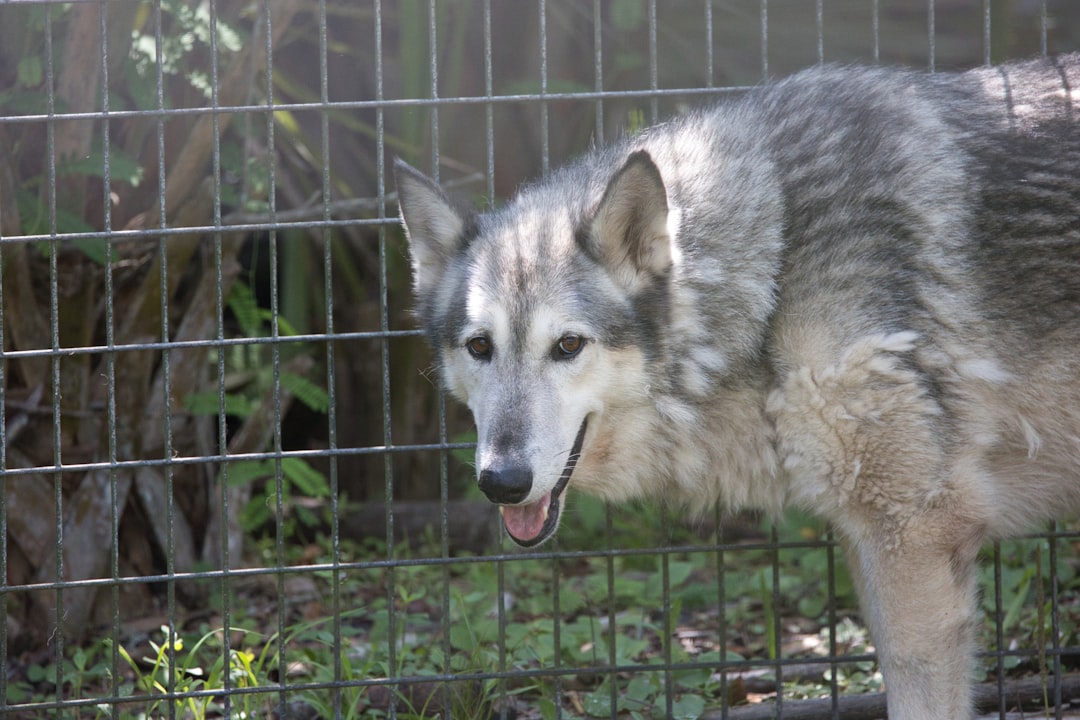Why Do Dogs Howl? Unraveling the Secrets of Dog Howling
This article explores the evolution, functions, and communication aspects of dog howling, emphasizing the diverse reasons why dogs howl and the importance of understanding this behavior for better communication and relationships between dogs and humans.
Evolution of Dog Howling
The evolution of dog howling can be traced back to their ancestors, wolves, who relied on howling as a form of communication to maintain their pack’s territory and coordinate over long distances. This primal form of communication has been passed down to modern-day dogs, showcasing the ancestral roots of this behavior. For example, in the wild, wolves use howling to convey their location to other pack members, ensuring that they stay connected and coordinated. This evolutionary aspect of dog howling highlights the innate nature of this behavior and its significance in terms of maintaining social bonds within a group.
When exploring the potential reasons behind dog howling, it becomes evident that this behavior is deeply ingrained in both survival and social contexts. From a survival standpoint, howling can serve as a means to ward off intruders and protect territory, reflecting the primal instincts inherited from their wolf ancestors. On a social level, howling allows dogs to express emotions, convey pain or discomfort, and communicate with other dogs or humans, showcasing the multifaceted nature of this behavior. Therefore, the evolutionary perspective of dog howling not only sheds light on its historical significance but also provides insights into the diverse functions and forms of communication embedded within this behavior.
Functions and Forms of Dog Howling
When it comes to the functions and forms of dog howling, it’s important to understand the multifaceted nature of this behavior. One of the key functions of dog howling lies in its ancestral roots, as dogs may howl to communicate their location to other pack members, maintaining group cohesion and coordination, much like their wolf ancestors did to maintain their pack’s territory. This evolution of dog howling highlights the survival and social aspects of this behavior, shedding light on the deep-rooted instincts that drive dogs to howl in various situations.
Moreover, the diverse emotional and physical aspects of dog howling encompass a wide range of functions. For instance, dog howling can serve as a way for dogs to ward off intruders and protect their territory, aligning with their survival instincts and territorial behavior. On the other hand, howling can also be a means for dogs to express their emotions, convey pain or discomfort, and seek attention from their owners. For example, a dog may howl when experiencing separation anxiety, conveying their distress and seeking comfort and reassurance from their human companions. This showcases the intricate and varied forms of dog howling, each carrying its own distinct message and purpose.
The context and intent behind dog howling play a crucial role in deciphering its potential meanings, as the same form of howling can convey different messages based on the specific situation and the dog’s emotional state. Understanding the functions and forms of dog howling not only provides insights into canine behavior but also enables dog owners and the broader community to interpret and respond to howling behavior more effectively, fostering better communication and relationships between dogs and humans.
The Communication Aspect of Dog Howling
The communication aspect of dog howling is deeply rooted in their evolutionary history, particularly in their shared ancestry with wolves. Wolves howl to communicate over long distances and maintain their pack’s territory, and this behavior has been inherited by dogs as a form of communication. For example, when a dog howls to communicate their location to other pack members, it reflects their inclination towards maintaining group cohesion and coordination, similar to their wolf ancestors. This emphasizes the social and survival aspects of howling, shedding light on the intricate nature of this behavior.
Furthermore, the communication aspect of dog howling is not limited to a singular purpose. Dogs may howl to convey various messages, including alerting, expressing emotions, and social signaling. For instance, a dog may howl to alert their owners about a potential danger or to express excitement upon encountering something of interest. These diverse functions of howling highlight its significance as a form of communication in different contexts. Therefore, understanding the complexities of dog howling and its communication aspect is crucial for dog owners and the broader community, as it enables them to interpret and respond to their dogs’ behavior effectively, ultimately fostering better communication and relationships between dogs and humans.
Common Triggers and Responses to Dog Howling
Dog howling can be triggered by various factors, shedding light on the emotional and situational stimuli for this behavior. One common trigger is separation anxiety, which can lead to dogs howling when they are left alone. This type of howling serves as a form of communication to express distress and seek comfort, highlighting the emotional aspect of howling. Additionally, dogs may howl in response to excitement, especially when they encounter something that stimulates their senses or ignites their playful nature. This form of howling is a reflection of their heightened emotional state and serves as a way for them to express their joy and enthusiasm.
Furthermore, dogs may also howl in response to specific sounds in their environment, such as sirens, musical instruments, or other dogs howling. This type of howling demonstrates their sensitivity to auditory stimuli and their natural inclination to vocalize in response to external noises. It showcases the adaptive nature of howling as a means of communication and responsiveness to their surroundings.
In terms of responses to howling, dogs can exhibit a range of emotions and behaviors. For example, some dogs may howl to express happiness, especially when they reunite with their owners or engage in activities that bring them joy. On the other hand, howling due to separation anxiety reflects the distress and discomfort experienced by dogs when they are apart from their human companions. Additionally, responding to loud noises through howling demonstrates their alertness and sensitivity to environmental stimuli, highlighting the diverse emotional and behavioral responses elicited by howling. It’s crucial to recognize and interpret these triggers and responses to better understand a dog’s emotional state and communication cues.
Understanding the Role of Dog Howling in Communication
The evolution of dog howling can be traced back to their ancestors, wolves, who used howling to communicate over long distances and maintain their pack’s territory. This historical comparison highlights the innate nature of howling as a form of communication deeply rooted in the canine lineage. Moreover, dogs may howl to communicate their location to other pack members, serving as a way of maintaining group cohesion and coordination. This emphasizes the social aspect of howling and its role in fostering cooperation within a pack, which has implications for understanding the communication dynamics among dogs.
Furthermore, the multifaceted nature of dog howling extends to its potential reasons based on their evolutionary history, which encompasses both survival and social aspects. For example, a dog may howl to ward off intruders and protect their territory, thereby showcasing how howling can be a survival and territorial behavior. Additionally, the ability of howling to convey emotions, such as excitement or pride about something they have found, further illustrates the diverse roles of howling in communication and expression. This complexity highlights the need for dog owners and the wider community to recognize and comprehend the nuanced messages conveyed through dog howling, ultimately strengthening the bond and communication between humans and their canine companions.
Conclusion
In conclusion, the evolution of dog howling is deeply rooted in the ancestral behaviors of wolves, who used howling to communicate over long distances and maintain their pack’s territory. This comparison sheds light on the primal origins of dog howling and its connection to their survival and social aspects. For instance, dogs may howl to communicate their location to other pack members as a way of maintaining group cohesion and coordination, mirroring the pack dynamics and communication strategies of their wolf ancestors [1, 2].
Furthermore, the multifaceted nature of dog howling is evident in its various functions and forms, ranging from warding off intruders and protecting territory to expressing emotions and conveying pain or discomfort. For example, dog howling can serve as a survival and territorial behavior, where dogs use their vocalization to ward off potential threats and protect their living space. Additionally, the diverse emotional and physical aspects of howling are exemplified in the different reasons why dogs may howl, including getting attention from owners, responding to triggering noises, and expressing excitement or pride about something they have found [1, 2].
Understanding the role of dog howling in communication is crucial for dog owners and the broader community, as it provides insights into the diverse roles of howling in communication. By recognizing and interpreting the communication aspect of dog howling, individuals can better respond to their canine companions’ needs and emotions. This underscores the importance of deepening the understanding of canine communication through further observation and exploration of dog behavior in relation to howling, ultimately fostering better communication and relationships between dogs and humans.



